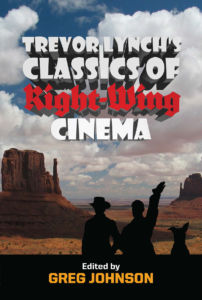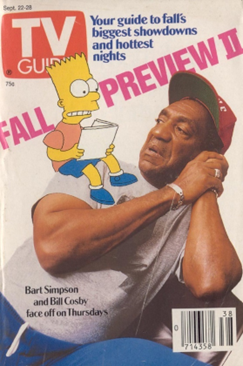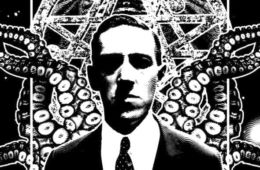Adult Cartoons Are a Disaster for Western Civilization, Part 2
Part 2 of 2 (Part 1 here)
My Problem with “Anime”
What I hate most about anime is the word “anime” itself, because the term was invented as a con to obscure the fact that you are simply watching a cartoon. It’s not “anime.” They are cartoons from Japan.
The term “action figure” was coined in the 1960s by the inventor of GI Joe, because he knew if he called them “dolls” — which is what they were — no boy would want to play with them. Dolls are for girls. So he called them “action figures,” and the trick worked. Likewise, in the late 1980s and early ‘90s there was still a strong taboo against adults watching cartoons because everyone knew that cartoons were for children.
As such, when cartoons from Japan were first being introduced in America, they had to call it something other than a “cartoon” or else no adult would have watched them. We were told that it was some sort of arthouse cinema that was highly respected by serious people in Japan. Not that all Japanese cartoons were deemed worthy of the label, however: Speed Racer was still a Japanese cartoon, whereas Akira was “anime.” Thus, no one bothered to say anything about the schoolgirls in sailor suits. No one said anything about the karate fights where people shoot lasers out of their arms. No one said anything about the girls in sexy maid outfits or the dudes with cat ears. We were told that “anime” was like Akira: artsy, dark, and noirish and with a lot of cyber punk influence that was making some sort of social commentary about capitalist society.
Little did we know how atypical Akira was. Indeed, the first “animes” to get huge promotional pushes in North America — Akira, Spirited Away, and Howl’s Moving Castle — were atypically artsy-fartsy and marketed towards the sort of people who like watching artsy-fartsy foreign films. Just look at the word “anime”: phonetically, it sounds like something French — perhaps spelled animé.
Akira was critically acclaimed and praised by no less than Roger Ebert. Suddenly, for the first time in human history, it was possible for a cartoon to be respected as serious art. Jesus wept, and the sound of Satan’s laughter echoed throughout the valley.
It’s noteworthy that Akira still follows many of the previously-established rules for an “adult cartoon” that had been laid down previously. It’s rated R and includes some psychedelic scenes that do not advance the narrative in any way, and seem to serve no other purpose than to look cool to someone who is high on drugs. All it lacked was a soundtrack by Cheap Trick.

Once the term “anime” started gaining social respectability, we began seeing the term applied to any animated product coming from Japan, regardless of its artistic merit. Sailor Moon was anime. Dragon Ball Z was anime. Everything Japanese was anime.
The Simpsons’ Transformation of American Culture
The first episode of The Simpsons, the Christmas-themed “Simpsons Roasting on an Open Fire,” followed the eponymous characters’ previous incarnations in a series of shorts that were aired as part of The Tracey Ullman Show between 1987 and 1989. The premiere episode of the series was nominated for two Emmys.
The Simpsons was considered groundbreaking for its time. It was neither a cartoon for children, nor was it a risqué cartoon for adults, but rather a cartoon for both the young and old. It was silly enough for the kids but the wicked-smart writing of Golden Age Simpsons appealed to adults. Its early seasons were very different from what the show would later become in that it put a higher emphasis on realism. The original premise was that while The Simpsons was a cartoon, the episodes would be about problems that an ordinary family could relate to: the son has to deal with a bully, the dad’s boss is a jerk, the family has a goody two-shoes neighbor whose life seems perfect, and so on. The show soon departed from this formula and became more madcap and absurdist as the decade progressed.
In hindsight, most would agree that much of The Simpsons’ early success was due to John Swartzwelder, a comedic prodigy who was the series’ head writer throughout its 1990s imperial phase. The show then experienced a conspicuous decline in quality in almost direct proportion to Swartzwelder’s decreasing involvement.
The Simpsons was more than just a hit, but a pop-culture phenomenon. After the smashing success of the first season, the executives at FOX were bullish enough about the show to move it to Thursday nights and put it in competition with The Cosby Show, which had been America’s top-rated show for five years running.
Other networks tried to emulate the The Simpsons’ success by putting out their own cartoons for adults, and most of these early attempts failed miserably. The first was ABC’s Capitol Critters, which debuted in January 1992 and was cancelled after seven episodes. Around the same time, CBS offered Fish Police, which had an all-star voice cast that included John Ritter, Ed Asner, Jonathan Winters, and Tim Curry. It lasted three episodes. The following year, CBS took another stab at it and presented Family Dog, which was not only created by former Simpsons writer and future Incredibles director Brad Bird but boasted no less than Steven Spielberg and Tim Burton as executive directors. They even got Danny Elfman, who had composed The Simpsons’ famous jingle, to do the theme song. According to Wikipedia, Family Dog is “considered one of the worst animated television series of all time,” and lasted then episodes. In 1994, The Critic starring Jon Lovitz lasted 13 episodes on ABC before it was cancelled, after which it moved to FOX for a second season and a guest appearance in The Simpsons — and was canceled after ten.

You can buy Trevor Lynch’s White Nationalist Guide to the Movies here
Thus, for a period in the 1990s it looked like The Simpsons might have been a fluke and that Western Civilization might be spared the hellscape to come.
But then cable got into the adult cartoons racket. MTV had a minor hit with Ren and Stimpy, and a major one with Beavis and Butthead. Comedy Central struck gold with South Park in 1997, and in the final year of the century came Family Guy, a show that would eventually surpass The Simpsons and become Fox’s flagship, and perhaps even defining, series. While The Simpsons had been the creation of boomers, the next wave of cartoons were made by Gen X-ers. Whereas The Simpsons attempted to appeal to both young and old, Gen X cartoons appealed to youth culture. You didn’t expect your parents to understand why Beavis and Butthead was funny.
By the turn of the century, there were therefore several adult cartoons on the air at any given time in the United States, and many of them were successful. Then, in the 2000s, Adult Swim came along and started mass-producing them. It’s around this time that I said “No more. As a matter of dignity, there is a finite amount of my life that I am willing to dedicate to watching cartoons. I’ll continue watching the cartoons I currently watch but I refuse to watch anymore.” I have not watched any cartoon that debuted in the twenty-first century.
But by now, the seeds of the West’s destruction have been sown.
Conclusion
The concept of a cartoon for adults was originally one drenched in irony. Seeing adult humor presented in a cartoon was funny because cartoons, understood as being for children, were typically maximally inoffensive. Thus, the whole concept of adult cartoons was originally intended as a joke.

You can buy Trevor Lynch’s Classics of Right-Wing Cinema here.
My problem with adult cartoons is not that they are all bad. Some of them are well-written and impressively crafted. I can see the appeal. My problem is that entire generations now grow up watching cartoons as children, and when they reach adulthood, they just move on to more sophisticated cartoons. Your teens and twenties should be a time when you branch out and learn about new things. Explore the classic movies of previous generations. Watch a foreign film — one that’s not a cartoon. Or better yet, read a book.
But young adults don’t do this anymore. They watch Paw Patrol until age six, then watch SpongeBob until high school, and then they get into Dragonball Z. Once in college they start liking the Rick and Morty sort of cartoons, and on and on. By the time they reach 40, many of these people are still watching cartoons but still haven’t seen Gone with the Wind.
Some people will defend the “anime”’s artistic merits. But how many of these people, besides watching “anime,” are also engaging with genuine art? How many could explain the difference between French Impressionism and German Expressionism? If you seriously believe that you can get all your cultural vitamins and minerals by watching cartoons, then you don’t have much incentive to engage with higher culture at all.
The end result is a significant blurring of the lines of what adulthood means. How old is too old to still be reading comic books? How old is too old for Pokémon? When are you too old for the next Pixar movie? If you’re never too old for cartoons, then when are you ever too old for anything? As the Bible says, “When I was a child, I spoke and thought and reasoned as a child. But when I became a man, I put away childish things.” Today, many people not only don’t ever put away childish things, but it’s not clear anymore what a childish thing is.
A lot of genies have been released from a lot of bottles, and it will take generations to get some of them back in. There is only so much we can do. We do not have the power to get women back in the kitchen or gays back in the closet, but one thing we can do — and one thing we must do, if we are going to roll the snowball back up the hill — is that we as a people have got to stop watching cartoons.

* * *
Like all journals of dissident ideas, Counter-Currents depends on the support of readers like you. Help us compete with the censors of the Left and the violent accelerationists of the Right with a donation today. (The easiest way to help is with an e-check donation. All you need is your checkbook.)
For other ways to donate, click here.






